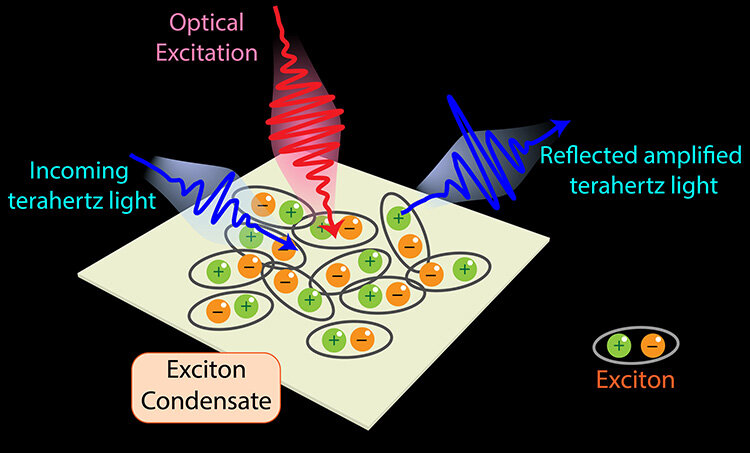Revealing the Unseen Characteristics of Quantum Materials
Certain materials possess hidden properties that can be uncovered using light, much like how a flashlight is used to see in the dark. Scientists at the University of California San Diego have utilized an advanced optical technique to gain a deeper understanding of a quantum material called Ta2NiSe5 (TNS). Their research, published in Nature Materials, demonstrates that materials respond rapidly to optical stimuli, allowing for the revelation of otherwise concealed properties.
Professor Richard Averitt, a Physics expert and one of the authors of the paper, explains that by shining a laser on a material, they are able to observe and track specific properties incrementally, similar to stop-action photography. This enables them to extract elusive properties that are challenging to discover through other means. By studying the movement of constituent particles within the system, these properties can be teased out.
The experiment was conducted by Sheikh Rubaiat Ul Haque, the lead author of the study, who completed his studies at UC San Diego in 2023 and is currently a postdoctoral scholar at Stanford University. Haque, along with Yuan Zhang, another graduate student in Averitt’s lab, enhanced a technique known as terahertz time-domain spectroscopy. This technique allows scientists to measure a material’s properties across a range of frequencies, and Haque’s improvements expanded the range of frequencies accessible for analysis.
The research was built upon a theory developed by Eugene Demler, a professor at ETH Zürich and another author of the paper. Demler, along with his graduate student Marios Michael, proposed the idea that certain quantum materials, when stimulated by light, can transform into a medium that amplifies terahertz frequency light. This concept prompted Haque and his colleagues to investigate the optical properties of TNS in detail.

The creation of an exciton occurs when an electron is excited to a higher level by a photon, resulting in the formation of a hole. If the electron and hole are bound together, it forms an exciton. Additionally, excitons have the potential to form a condensate, which is a state where particles come together and behave as a single entity.
By utilizing Haque’s technique, supported by Demler’s theory and employing density functional calculations conducted by Angel Rubio’s group at the Max Planck Institute for the Structure and Dynamics of Matter, the research team successfully observed anomalous terahertz light amplification. This discovery revealed previously hidden properties of the TNS exciton condensate.
Condensates are a clearly defined quantum state, and employing this spectroscopic technique could enable the imprinting of some of their quantum properties onto light. This development could have significant implications in the emerging field of entangled light sources, where multiple light sources possess interconnected properties, utilizing quantum materials.
Haque expressed, “I believe this is a vast and unexplored area. Demler’s theory can be applied to a range of other materials with nonlinear optical properties. Through this technique, we have the potential to uncover new light-induced phenomena that have yet to be investigated.”
This article is republished from PhysORG under a Creative Commons license. Read the original article.
Do not forget to share your opinion with us to provide you with the best posts !




0 Comments